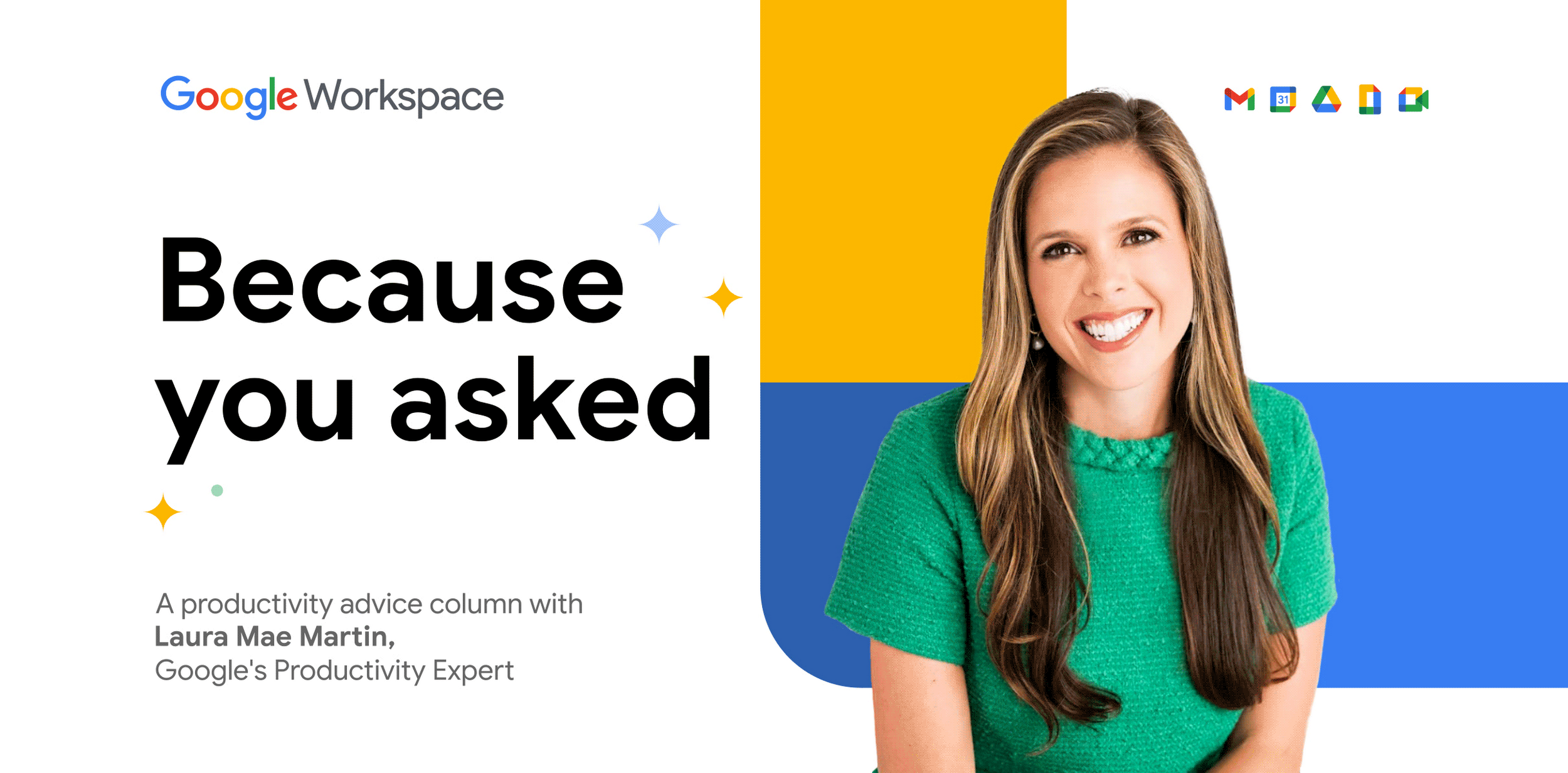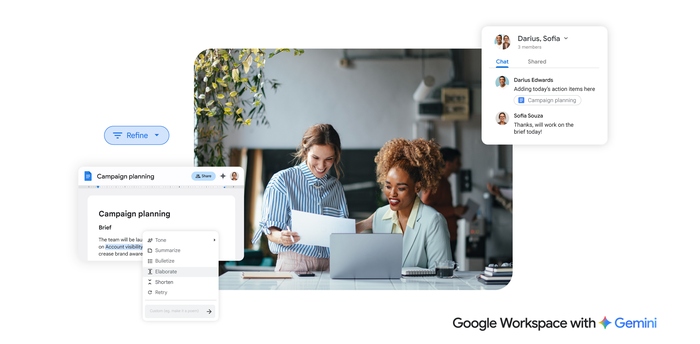Because you asked: How to create a workflow dashboard with Gmail

The Google Workspace Team
Google Workspace Newsletter
Keep up with the evolving future of work and collaboration with insights, trends, and product news.
SIGN UPWelcome back to “Because you asked,” our productivity advice column featuring Laura Mae Martin, Google’s executive productivity advisor. Laura will answer your questions about how to work smarter with Google Workspace. If you missed our first post, check out “How Google Calendar can help boost your productivity.” You can also learn more about Laura’s new book Uptime: A Practical Guide to Personal Productivity and Wellbeing at her website.
Our question comes from Christian N., a Google Workspace Certified Professional.
“Hi Laura, what's your favorite Gmail inbox type, and why?”
Thanks for your question, Christian!
Gmail can be an incredibly powerful productivity tool, helping you centralize and prioritize key tasks. It’s all about how you use it. My favorite inbox type is multiple inboxes, and I’ll explain how it transforms Gmail into a workflow dashboard customized to your needs.
When your inbox is a mix of new messages, draft responses, and half-completed tasks, it can feel like you’re never really finished. It’s also difficult to find critical messages. Start changing your relationship with email using the process below.
Three Steps to Clean Up Your Email
1. Remove what you don’t need to see
An inbox with hundreds of messages is incredibly distracting. Each unopened email in your inbox saps a tiny bit of your attention and energy. So, it’s important to remove these distractions. Start by looking for irrelevant emails. Search your unopened emails for messages that contain “unsubscribe” or “view in browser.” Then, create a filter that automatically deletes these emails. You can even create a filter from within an email — or block sender, unsubscribe, or mark as spam. You can improve your focus simply by removing these extraneous messages.
2. Make sure that what you do need to see stands out
Use labels, colors, and filters to ensure your important emails never get buried. Start by creating a label called “VIP” and select a prominent color, like red. Next, set up a filter that applies this label to emails from your manager or other important stakeholders. You can even “star” the messages so they pop. Try creating unique labels and filters for all your regular messages, including weekly industry newsletters, calendar invites and communications from key clients. Suddenly, it’s easy to find important messages when you scan your inbox.
3. Sort your emails like you sort your laundry
Ideally, we sort our clothes into baskets, wash and dry them in order, and then fold and put away an entire basket of laundry at once. You’d never put your clothes away one at a time or mix wet and dry clothes, but that’s similar to what many people do with email. They check email multiple times a day, keep read and unread emails in the same place, and sometimes read an email several times before they do anything with it. When your inbox is a mix of read and unread messages or completed and uncompleted requests, you can waste time trying to remember what needs your attention.
Schedule time on your calendar to “do email” and address each message during that time. Sort your messages into four buckets or labels: Respond, Read, Revisit, and Relax.
Respond messages are those you need to address right away.
Read messages are informational emails that you’d like to read, but that don’t need to be answered.
Revisit messages require you to follow up before you can respond with a deliverable.
Relax is when you can place emails that no longer require any action on your part — in the archive or into a folder or label to reference later.
Taking the next steps toward Gmail as a workflow dashboard
To get started:
Perform a one-time inbox setup by creating four labels: Read, Respond, Revisit, Relax.
Turn on multiple inboxes under Settings and create an inbox for each of these four labels. I like to set the panes to the right side of the inbox.
Now, when you archive an email in your main inbox, it will stay in the new multiple inbox pane as long as it still fits within that label search. Think of this like your laundry baskets of things to fold, hang, etc. Take them out of the dryer and place them into baskets based on what you need to do next. Remember, if a message doesn’t fall into one of these categories, it doesn’t need to be in your inbox because it’s not an active email - Relax! Archive or delete it.
Further personalize your workspace
Match your inbox to your work style. Are you receiving too many alerts about upcoming events or changes in Docs? If so, you can customize your notifications to stop these alerts. Personalize the look and feel of your workspace by changing the layout or selecting a visual theme. You can also add or remove inbox categories and tabs.
Power your inbox with Gemini for Google Workspace
Gemini for Google Workspace can help you power through your inboxes by quickly finding information and drafting contextually relevant messages. For example, your manager asks you to email the latest sales numbers. You can open Gmail, tap “Compose,” and select “Help me write” below the body copy. Prompt Gemini to “draft a message to my manager that includes Q1 sales numbers.” Gemini will pull the data from your Docs, Sheets, or Slides in seconds and include it in your message. Or ask Gemini to "write a fun, upbeat invitation to Dan’s retirement party next Friday at noon." Gemini will quickly generate a message that you can insert, edit, and send.
If you’re already part of the Workspace Community Forum, you can submit your own questions at the Google Workspace Q&A. Otherwise, you can send your question to: asklaura@google.com.
Check out some additional productivity tips.



